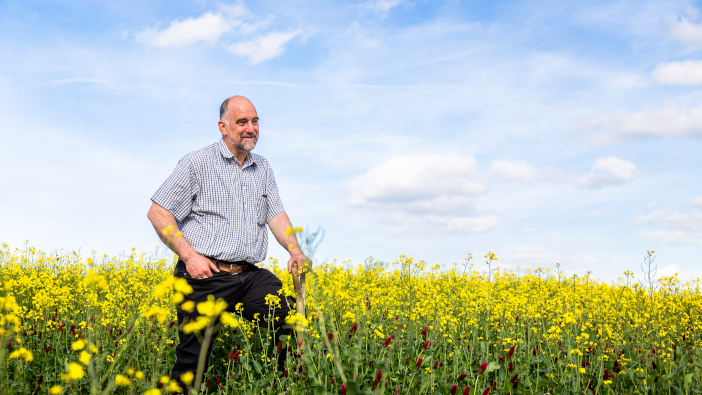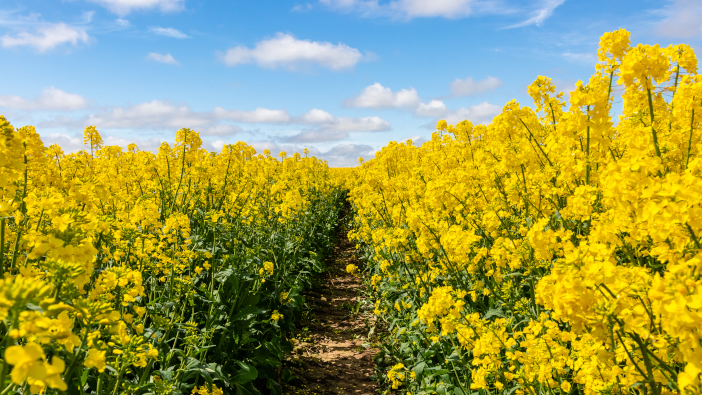According to LimaGrain UK, oilseed rape (OSR) growers do not have to rely on hybrid varieties of the crop to escape damage in the autumn.
It is assumed that only hybrid OSR provides the vigour that crops need to escape autumn damages, however Limagrain UK said that certain conventional varieties can also grow past the damage caused by cabbage stem flea beetle (CSFB), in the autumn.
This information is particularly significant to growers as conventional rape varieties now only account for 35-40% of all UK OSR crops, says Liam Wilkinson, technical oilseed rape specialist for Limagrain UK.
Mr Wilkinson noted that the majority of the market has ceded to hybrids which ‘traditionally offer greater vigour and the opportunity to ‘stack’ beneficial traits such as resistance to pod shatter and disease’. As hybrid varieties provide growers with the required vigorous growth in the autumn, “to establish a canopy as quickly as possible so the crop gets away from the adult beetles.”
Both the conventional varieties Acacia and Amarone show similar characteristics to hybrids, said Mr Wilkinson. “They quickly establish the three or four true leaves they need to reduce the risk from grazing damage by the adult CFSB.”
Plus, Acacia and Amarone offer turnip yellow virus (TuYV) resistance and can help to form the basis of an integrated pest management strategy on farm or reduce reliance on autumn insecticides. Acacia is also the highest-yielding conventional OSR variety on the AHDB 2021/22 recommended list.
However, Mr Wilkinson warns growers that drilling is just as important to a crops autumn survival. “Drill according to moisture levels rather than the calendar,” he states, and “drill for the soil conditions – you must have enough moisture to get the plants off to a good start, so they can get and keep going.”
Conventional OSR grower

Tim Parton is an advocate for regenerative agriculture, based in South Staffordshire, who has continued to grow conventional OSR varieties with great success. He grows around 40ha of a three-variety blend of OSR, which includes Acacia and Amarone. He also saves his own seed, so the mixture he sows becomes increasingly better adapted to his farm.
“By combing several varieties, I get stronger disease resistance which helps keep costs down. At the same time, those three varieties are adapting to my farm’s soil and conditions,” said Mr Parton. When the seeds senescence, “they send endophytes into the seeds that are ready to be sown into the environment they have been grown in; which improves plant genes for the future.”
Mr Parton aims to direct drill his OSR crop with a companion crop in the first week of September – using a high seed rate to achieve 100 plants/m2; the companion crop tends to be a mixture of crimson, white and burseem clover. Molybdenum, sulphur, boron and manganese is also added to the seedbed so that young plants synthesise sugars and do not attract CFSB.
The total amount of nitrogen supplied is around 170kgs/ha and Mr Parton’s yields average at around 5t/ha over the years.


